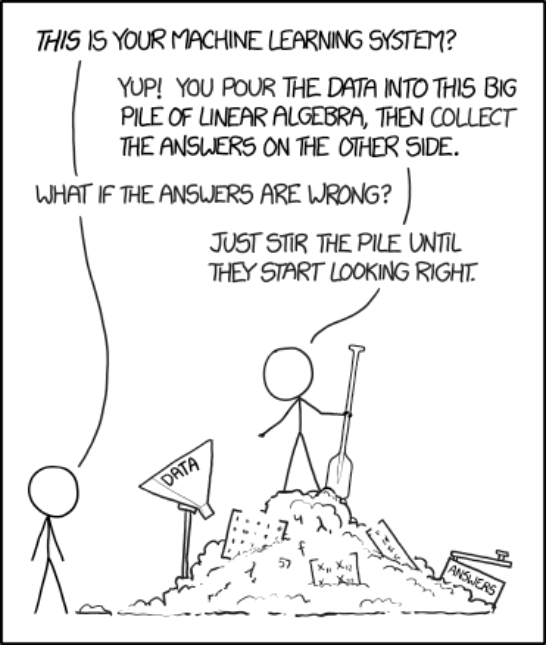CSCC11 Winter 2022 Course Information
Hello, dear friend, you can consult us at any time if you have any questions, add WeChat: daixieit
CSCC11 Winter 2022 Course Information
Welcome to the exiciting journey of machine learning (ML)! Please read below carefully for an overview of what this course is about, what you need to know prior to this course, and what you can expect to learn. This document also includes relevant course policies.
1 Introduction
This course introduces the basic conceptual elements of ML. We will study how to represent tasks as ML problems and mathematically formulate the methods for solving these problems. In this course, we focus on methods for regression, classification, and unsupervised learning. These in- clude linear and non-linear regression, bayesian regression, class conditionals, decision trees, logistic regression, mixture models, and principal component analysis.
2 Course Learning Objectives
By the end of the course, you should be able to:
1. How to formulate a task as a ML problem
2. Understand and explain the methods for solving the ML problems
3. Write code to apply the methods onto the ML problems
4. Analyze the results and select the best model
NOTE: You may not learn data collection, “data processing”, data analysis, and decision making techniques. Here, we simply focus on creating models that can describe the data or predict the outputs, but not necessarily how we can use it to make decisions.
3 Required Background
You are expected to be comfortable with basic probability and statistics, linear algebra, and vector calculus for understanding the conceptual ideas. You are also expected to be comfortable with programming in Python (e.g. knowing what a class is, being able to write, run, test, and debug your own code).
4 Course Texts
We will mainly focus on the notes written by the faculty at the University of Toronto that will be posted on Quercus. Consequently, there is no required textbook for the course. The following texts are great references for this course:
(1) C. Bishop. Pattern Recognition and Machine Learning. Springer, 2006.
(2) T. Hastie, R. Tibshirani, and J. Friedman. The Elements of Statistical Learning. Springer, 2008
(3) K. Murphy. Machine Learning: A Probabilistic Perspective, MIT Press, 2012.
5 Resources
The following describes the tools we will be using:
• Quercus: Central place to find information such as announcements, course notes, assignments, and demos. This is also where you submit your work.
• Zoom: Your January lectures and tutorials are held on Zoom. The links will be posted on the announcement page. Afterwards, see you in person!
• Piazza: The course’s discussion board
• Office Hours: See under Course Administration. Prior to exam, we will host exam office hour and announce the schedule on Quercus. Piazza is also a great place to ask questions.
• Environment: A separate document is provided on how to set up your working environment. In short, we expect you to work on a Unix system. You may use the lab machines or your own workstation but you must ensure all code you produced runs on the lab machines.
• Programming: We will be using Python 3.7 (64-bit is preferred) and Jupyter Notebook. We mainly use NumPy and Matplotlib packages for development so please get familiar with them.
|
|
6 Course Administration
• Course Instructors:
Bryan Chan: [email protected] - Office Hour: By appointment Shuo Shuo Liu: [email protected] - Office Hour: Tuesday 11am to noon, Thursday 11am to noon
• Grading: The grading for the course will be based on four assignments (40%), four quizzes (20%), and a take-home final exam (40%). You must obtain a mark of at least 35/100 on the final examination to pass the course. Otherwise, your final course grade will be equal to the final exam grade.
• Assignments: Assignments involve both written and programming components. The programming is done in Python. We will be posting the assignments on Quercus as they become available. You can expect each assignment to span approximately two to three weeks.
• Remark Requests: Requests for remarks or reviews must be received within 1 week of the marks being published. The request should be directed to the designated grading TA and the instructors through email.
• Late submission penalty: 15% for each day up to day 3 (i.e. 15%, 30%, 45%)—after 3 days, the assignment is regarded as zero. If you have a medical condition or unforeseen personal circumstances, please reach out to the instructors for possible extension.
• Academic Honesty and Plagiarism: In short, please do not share or “Google” solutions. You may, however, discuss high level ideas and approaches to a problem. We will be carefully noting any questionable submissions on both the written and programming components. If plagiarism is found, you will get into all sorts of trouble. See this page for more information.
7 Final Comments
Here’s a comic that you will appreciate eventually.

2022-01-29